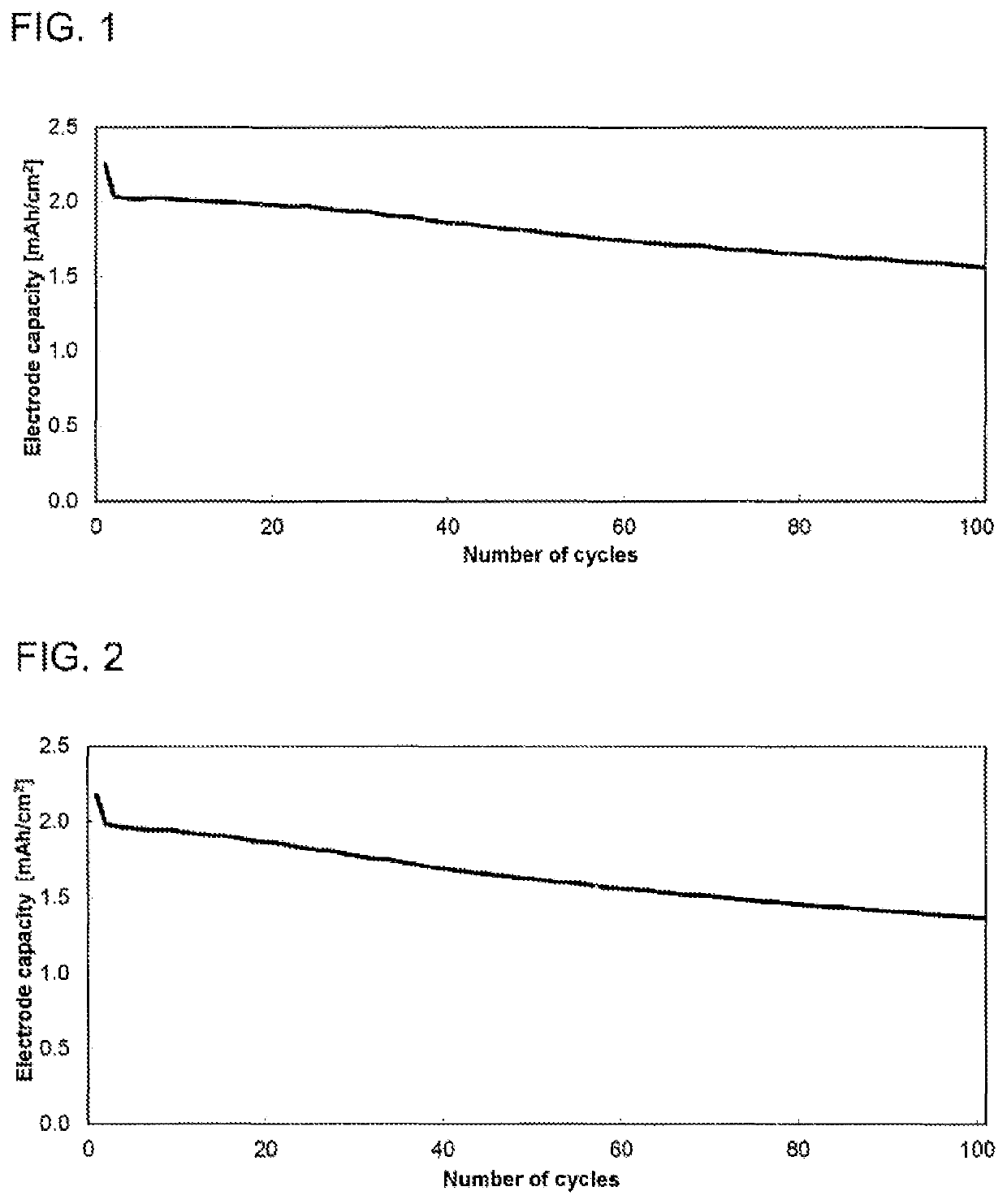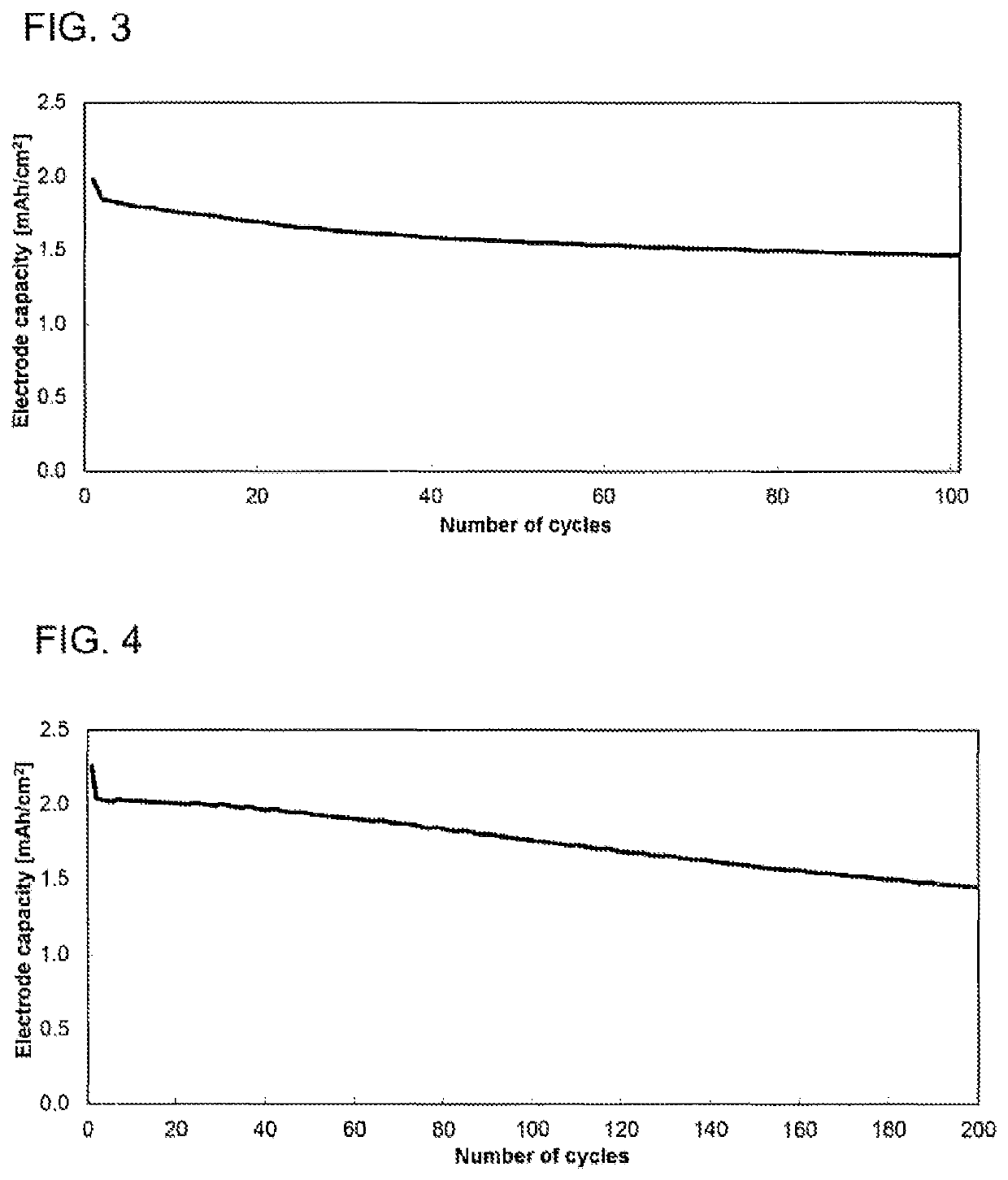Lithium ion batteries
a technology ion batteries, applied in the field of lithium ion batteries, can solve the problems of significant mechanical stress on the crystallites, loss of electrical contact, and low electrochemical capacity of theoretically at most 372 mah per gram of graphi
- Summary
- Abstract
- Description
- Claims
- Application Information
AI Technical Summary
Benefits of technology
Problems solved by technology
Method used
Image
Examples
example 1
[0120]Production of Non-Aggregated Silicon Particles of Sub-micrometer size in the form of chips by grinding:
[0121]First of all, 500 g of pure silicon (particle size distribution: d10=8 μm, d50=15 μm and d90=25 μm; produced by grinding coarser particles with a fluidized bed jet mill) were suspended homogeneously in 2 kg of ethanol (99% purity) by stirring for 20 minutes. The grinding space of the Netzsch LabStar LS1 laboratory stirred ball mill with ZETA ceramic grinding system was filled with 490 ml of yttria-stabilized zirconia grinding beads (mean diameter: 0.3 mm) and closed. The suspension of silicon and ethanol was introduced into the cooled (15° C.) grinding vessel of the mill and pumped through the mill in circulation with a throughput of 40 kg / h. Grinding was effected at a mill speed of 3000 rpm for 55 min. After the grinding operation, ethanol was added to the suspension until its solids concentration was 21.8% by weight. Measurement of the particle distribution by static ...
example 2
[0122]Production of an Anode with the Silicon Particles from Example 1 and Sodium Carboxymethylcellulose as Binder:
[0123]11.0 g of the suspension of silicon in ethanol from example 1 (solids concentration: 21.8% by weight) were dispersed in 12.52 g of a 1.4% by weight solution of sodium carboxymethylcellulose (Daicel, Grade 1380) in water by means of a dissolver at a circumferential speed of 4.5 m / s for 5 min and of 17 m / s for 30 min with cooling at 20° C. After addition of 0.856 g of graphite (Imerys, KS6L C), the mixture was then stirred at a circumferential speed of 12 m / s for a further 30 min. After degassing, the dispersion was applied to a copper foil of thickness 0.030 mm (Schlenk Metallfolien, SE-Cu58) by means of a film applicator with gap width 0.20 mm (Erichsen, model 360). The anode coating thus produced was then dried at 80° C. and an air pressure of 1 bar for 60 min. The mean basis weight of the dry anode coating was 2.90 mg / cm2.
example 3 (
Ex.3)
[0124]Lithium Ion Battery with the Anode from Example 2:
[0125]The electrochemical studies were conducted in a button cell (CR2032 type, Hohsen Corp.) in a 2-electrode arrangement. The electrode coating from example 2 was used as counterelectrode or negative electrode (Dm=15 mm), and a coating based on 1:1:1 lithium nickel manganese cobalt oxide with a content of 94.0% and a mean basis weight of 14.5 mg / cm2 (sourced from Custom Cells) as working electrode or positive electrode (Dm=15 mm). A glass fiber filter paper (Whatman, GD type D) impregnated with 120 μl of electrolyte served as separator (Dm=16 mm). The electrolyte used consisted of a 1.0 molar solution of lithium hexafluorophosphate in a 3:7 (v / v) mixture of vinylene carbonate and diethyl carbonate, to which 10.0% by weight of fluorodimethylsilylbutanenitrile and 2.0% by weight of tributylamine had been added. The cell was built in a glovebox (2O, O2); the water content in the dry mass of all components used was below 20 ...
PUM
| Property | Measurement | Unit |
|---|---|---|
| diameter | aaaaa | aaaaa |
| diameter | aaaaa | aaaaa |
| volume-weighted particle size distribution | aaaaa | aaaaa |
Abstract
Description
Claims
Application Information
 Login to View More
Login to View More - R&D
- Intellectual Property
- Life Sciences
- Materials
- Tech Scout
- Unparalleled Data Quality
- Higher Quality Content
- 60% Fewer Hallucinations
Browse by: Latest US Patents, China's latest patents, Technical Efficacy Thesaurus, Application Domain, Technology Topic, Popular Technical Reports.
© 2025 PatSnap. All rights reserved.Legal|Privacy policy|Modern Slavery Act Transparency Statement|Sitemap|About US| Contact US: help@patsnap.com



